From the time she was a very small girl living in San Francisco, Florence Juliette Antoinette Lacaze knew she wanted a special place in life. Florence quickly determined that because she wasn’t born into that “special place,” she would have to develop it on her own. From that day on, everything Florence did was a calculated move to enhance her position in society, create wealth, and as we’ll see after France’s liberation, protect her physical self and reputation (Florence perfected the art of lying to enhance her life story). In other words, Florence built her entire life around her. While Florence was a benefactor to her friends, she was ruthless towards her enemies. She shared several common traits with her deceased father-in-law, Jay Gould, the notorious 19th-century “Robber Baron.”
Did You Know?
Many of us were required to read F. Scott Fitzgerald’s novel The Great Gatsby while in junior high or early high school. Remember those days reading about East Egg and West Egg? East Egg was the aristocratic section of town while West Egg belonged to the nouveau rich. The character social types were in love with money, social standing, and generally created a lot of messes in their lives (and others). Fitzgerald finished the first draft and sent it to his editor. It was promptly sent back to the author because Fitzgerald “had not sufficiently developed the characters with any believability.” Fitzgerald and his wife, Zelda were, at the time, fixtures on the French Riviera staying in Frank and Florence’s hotel, in Juan-les-Pins. They were first hand observers of mid-1920s high society and the exploits of the crowd which included Florence. So, when the draft was sent back for revisions, Fitzgerald fleshed out his characters using the group of people orbiting around Florence. When the novel was published, it met lukewarm reviews but more revealing was the fact that none of the Riviera crowd recognized themselves.
Let’s Meet Florence
You’ve probably never run across the subject of our blog today. Florence Lacaze Gould (1895−1983) was and is to this day, an enigma. Very little has been written about her, much to the delight of her estate and foundation. In fact, the availability of images of Florence is tightly controlled by her foundation. Her legacy (and that of her husband, Frank Gould) are nowhere to be seen in written accounts of the numerous properties they founded or developed into very successful businesses.
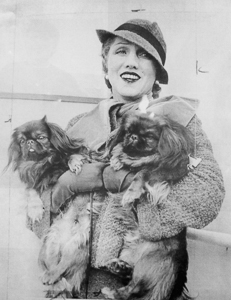
Florence’s father, Maximin, was a French immigrant who went into the newspaper business in San Francisco. Maximin came to America penniless but he possessed a very sharp brain. As a small girl, people would say Florence inherited her father’s looks (blonde hair and piercing, seductive green eyes) as well as his “deadly brainpower.” I wonder whether he shared her loud piercing laugh, constant stream of words (otherwise known as a “motor mouth”), or indiscretions. Her mother, Berthe Joséphine Rennesson Bazille, was born in Paris to an unwed mother (Florence Rennesson, nicknamed Florinte). Maximin managed to build up a nice, but not overly immense, net worth for the family centered around real estate. Florinte was also able to build a modest net worth around her real estate holdings in San Francisco.
On 18 April 1906 at 5:12 in the morning, a 7.9 earthquake hit San Francisco—this was the “Big One.” It practically wiped out the Lacaze family’s net worth. Maximin was determined to stay in the city and assist in the recovery efforts (including his own). However, Berthe took her two daughters and Florinte to Paris where they would live in a very luxurious apartment at 2, rue de Fleurus in the Odéon quarter of the sixth arrondissement (on the Left Bank)—Florinte lived separately at 10, rue Léopold-Robert. According to Berthe, all of them were now Parisians. After Maximin and Florinte died in 1911 (separated by nine months), Berthe began the arduous process of claiming her inheritance. After many years of dealing with American and French laws concerning her true citizenship, Berthe was able to claim the inheritance but not before the family had to reduce its Parisian lifestyle many times over the years.
Four years after experiencing the earthquake, fifteen-year-old Florence was in the middle of her second major encounter with Mother Nature. The rain started the second week in January 1910 and didn’t stop until Paris was under water. On 21 January, the rivers feeding the Seine were surging faster than anyone could remember and by the afternoon, Parisians noticed the rising levels of the river which bisected their city. Between then and 28 January when the Seine reached its peak, the only way to get around the city was by rowboat, walking on elevated planks, or swimming.
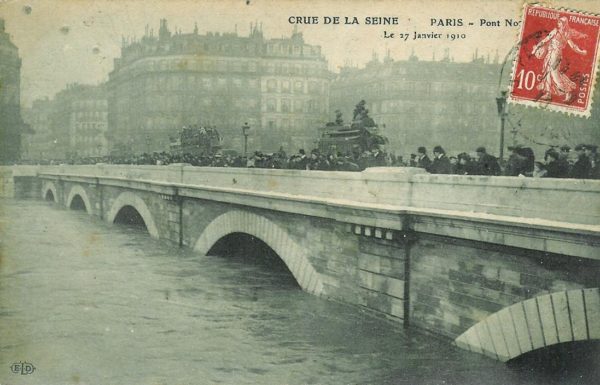
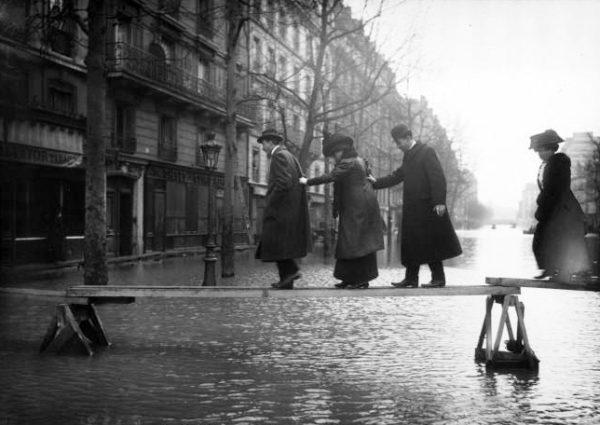
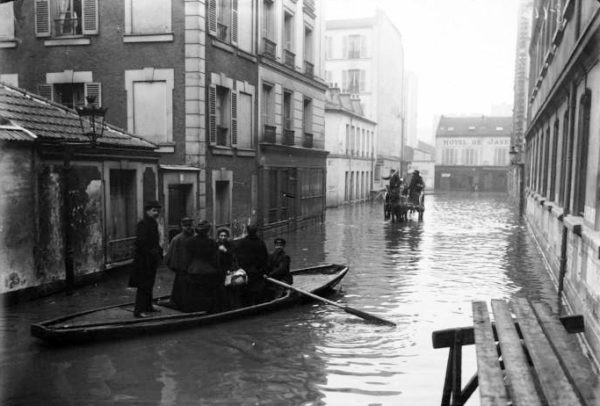
A major event occurred in the late 19th-century which would have long lasting effects on France and le Tout-Paris (the fashionable elite of Paris) which Florence so desperately wanted to be a part of. Captain Alfred Dreyfus (1859−1935), the son of a wealthy Jewish textile merchant, was accused and tried for alleged acts of treason. What became known as The Affaire divided France over a period of twelve years. You were either on his side (as a “Dreyfusard”) or against him (as an “anti-Dreyfusard”). The anti-Dreyfusards tended to be monarchists (i.e., royalists), clerics, army personnel, and anti-Semites. Dreyfus was found guilty and shipped off to Devils Island. After a second trial in 1899 (he was found guilty again), Dreyfus was pardoned in hopes of ending the bitterness between French citizens. The division created animosity between friends, families, and for Florence, embarrassing moments in her weekly salons (le Tout-Paris tended to be anti-Dreyfusards while her intelligentsia friends were Dreyfusards). Dreyfus’s name was finally cleared in 1906 when evidence proved the whole affair had been an anti-Semitic plot by the army (the French army did not apologize until 1995).
Florence was always looking for her entrée into le Tout-Paris and she decided it would begin with the right marriage. Less than three weeks after Germany declared war on France (3 August 1914), Florence hopped into bed with Henry Chittenden Heynemann, the son of a prominent Philadelphia society family. She asked Henry to marry her and the twenty-three old was no match for Florence and her beguiling ways. Five months after the wedding, Florence left Henry. She figured out very quickly that he couldn’t provide the path she was looking for. It was messy but Florence learned her lesson.

Madame Lacaze, as she was known to the French, returned to Paris in the fall of 1916 to find the city devoid of young men (Florence would later begin spelling her maiden name as La Caze so that it sounded like nobility). Led by Coco Chanel, French fashions and cosmetics ruled Paris by now and Florence was at the head of the line. (Click here to read the blog Coco Chanel: Nazi Collaborator or Spy?) After a stint as a nurse in field hospitals, Florence returned to Paris to become a show girl. It’s during this phase that she met Frank Jay Gould. Florence would ultimately become the third actress/show girl who Frank married (the French would later call him “Franck”). After years of fighting his ex-wife from the second marriage, Frank married Florence in February 1923. He was forty-five and she was almost twenty-eight. By this time, Frank was a drunk and his health was deteriorating rapidly because of it. Over time, Florence saved her husband from certain death at a relatively young age by nursing him and getting him into rehabilitation. In return, Frank gave Florence just about anything she wanted. Florence had finally found her private bank.
The Gould Family
The patriarch of the family, Jay Gould (1836−1892), was one of America’s leading “Robber Barons” who developed railways and pursued speculative investments. The term “business ethics” was an oxymoron to Gould. He followed Commodore Vanderbilt’s philosophy of “to avoid being suckered, go out into the business world with the intention of doing it to someone else.” Unfortunately, the Commodore would be at the receiving end of his advice when Gould fleeced him out of $8.0 million on a raid for the Erie Railroad—it wasn’t the first or last time Jay Gould would backstab a business partner. This earned the Gould family a ban from Mrs. Vanderbilt’s and Mrs. Astor’s New York society list called the “Four Hundred.” Jay Gould could have cared less. He immediately went out and purchased the Rutland and Washington Railroad shortly followed by a network of other Midwest railroads. Learn more about Jay Gould here.
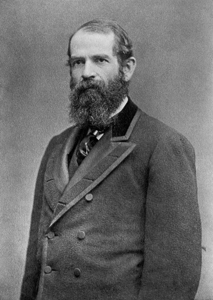
Jay and Helen had six children; Frank Jay Gould (1877−1956) was the youngest. The four boys had an affinity for stage actresses while one of the girls would eventually marry into nobility.
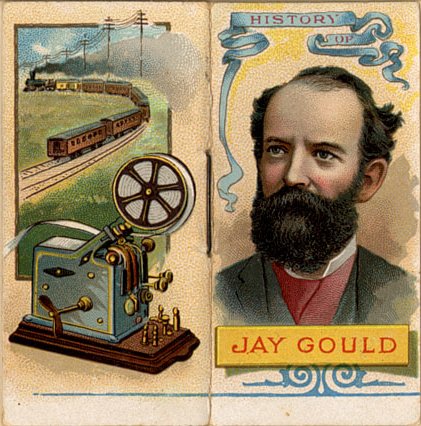
At the time of Jay’s death from tuberculosis, he was one of the richest (and reviled) men in America. He amassed a fortune worth $72.0 million (approximately $1.8 billion in 2016 dollars). The children shared equally and each used their money in different ways. Frank used his to establish an entertainment and hotel empire on the French Riviera. Although it was funded by Frank’s money, the ongoing business success was due to Florence’s efforts.
In-Between World Wars
The two decades between the world wars were quite exhilarating for Florence and the crowd she ran around with in France. It was the time of American expats in Paris known as the “Lost Generation.” It was a period when black American entertainers such as Josephine Baker came to Paris to escape the stifling racism in America. The Jazz Age kicked in and liquor flowed freely without the shackles of the American Prohibition. The decade of the 1930s was bookended by the start of a terrible depression in America (which eventually spread to France and the continent) and the beginning of the second world war in Europe. However, in-between was a time when Florence reached her zenith not only with international society but also in business.
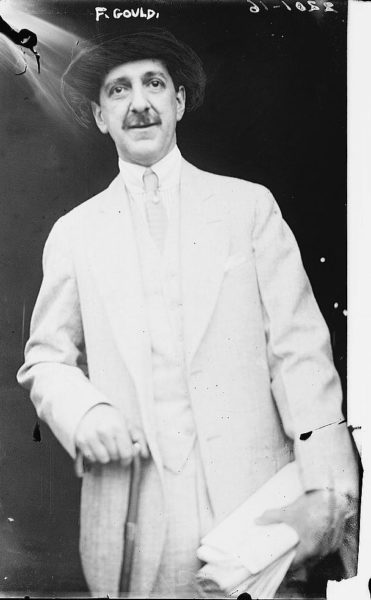
It was also a time when open sexuality was in vogue. Lesbianism and homosexuality were accepted without any stigma or taboos attached. Short-term affairs by both husbands and wives (especially in high society) were the norm and while everyone knew who was sleeping with whom, as long as it wasn’t mentioned, it was acceptable. Florence and Frank had, what we call today, an “open marriage.” Venereal disease became common and spread quite rapidly among the participants. Although penicillin was discovered in 1928, it wasn’t until the late 1940s that it became widely used. Treatment for syphilis (both Florence and Frank are thought to have suffered from this) was an organic arsenic compound known as Neosalvarsan. The drug had severe side effects, including death and liver failure. The alternative was to be treated with mercury but even then, there could be deadly side effects. This lifestyle and its consequences would eventually catch up to Franck.
Florence was a gambler (in many ways) and she particularly enjoyed roulette and baccarat. Frank had a thing for the Monaco Casino. So, the two of them did what you would expect: they went and built their own casino and hotel. However, they were smart enough to do two things: stay away from the competition in Nice and Monaco and build a casino and hotel to surpass the Monaco Casino and its adjacent hotel, the Hôtel de Paris. Soon the society crowd migrated over to the Goulds’ hotels and casinos. Over the years, they resided in Juan-les-Pins while building up an empire of casinos, hotels, and spas throughout France employing the ruthlessness of Frank’s father. Their first hotel, Hôtel le Provençal, remains as one of the top destination spots of the Riviera. See more photos of the properties here.
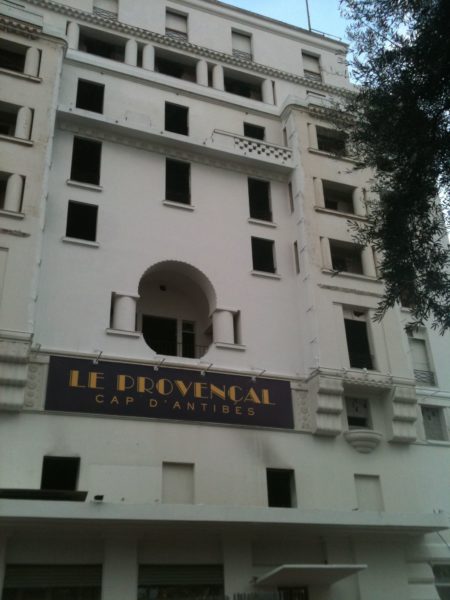
The Dark Years (For Everyone Else Except Florence)
Florence took up residence at the Hôtel Bristol in the fall of 1940 (the Germans had marched into Paris four months earlier on 14 June 1940). From there she would go and hobnob nightly with the likes of Hermann Göring and Otto Abetz at Maxim’s restaurant, attend the Paris nightclubs including, Chez Carrère, and host her weekly salons.
Florence continued her predatory buying sprees at the various art galleries offering “ownerless” and “degenerate” artwork. These were auctions where she bid against Hitler’s agents and when she won, Florence was always forced to pay premium prices. The euphemism, “ownerless,” meant the piece had been confiscated from Jewish owners while “degenerate” meant the piece did not meet Hitler’s tastes.
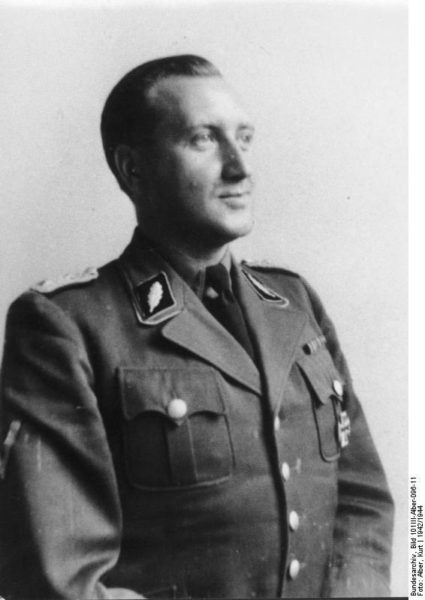
The German ambassador and his wife, Otto and Suzanne Abetz, always made sure Florence was invited to their lavish parties at the embassy. She would become friends with Helmut Knochen, head of the Paris Gestapo (also one of Florence’s part-time lovers) and General Carl Oberg, head of the SS in Paris. One of her full-time lovers was Carl Ludwig Vogel, an approved Nazi black marketer (“Operation Otto”). One of Florence’s frequent dinner companions was Gerhard Heller. He was the German literary censor ensconced at the Propaganda-Staffel (German Propaganda Staff). His power as censor was immense and Florence knew it and used it to assist her friends.
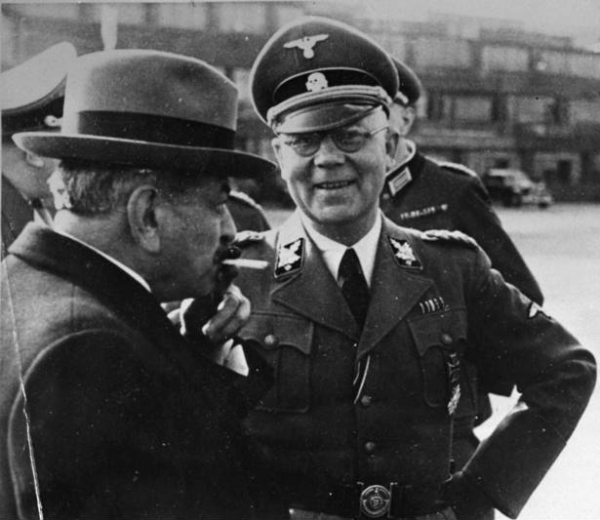
Where was Franck all this time? He remained in Juan-les-Pins looking after the family’s business interests. Florence and Vogel would frequently travel to the south of France and see Frank (don’t forget about their “open marriage”). Vogel was actually a Gestapo agent and the top Nazis had their eyes set on the Goulds’ art collection.
All was fine while America remained neutral. But when Congress declared war on Germany in mid-December 1941, the rules changed. Or were there two sets of rules—one for Florence and one for everyone else? Her exploits and contacts over the past two years in Paris would payoff dividends. Florence was exempt from having to register daily with the authorities as an enemy alien and she was protected from being arrested (Frank shared these Nazi courtesies but only after the Nazis were convinced he wasn’t Jewish). However, she and Frank knew it was only a matter of time before the Nazis would attempt to “Aryanize” (i.e., appropriate) their French assets. It was time for Florence to kick it up a notch.
Florence negotiated the appointment of Hans Warzinski as the Aryan administrator assigned to the Goulds’ assets. Florence knew Warzinski was pliable and could be manipulated. However, by July 1942, Vogel told Florence to leave Paris and hide out on the Riviera. He would let her know when it was safe to return to the city. Her knowledge of what was happening in Paris came through Vogel, Oberg, and her network of “gray mice.” The Nazis were becoming even more ruthless by now with respect to résistants, enemy ex-pats, and the deportations of Jews and other undesirables. In September 1942, they rounded up and imprisoned approximately 1,400 Americans living in Paris. By the second week in November, the Nazis invaded the unoccupied territory (the “Free Zone” was no longer free) and Vichy was exposed as a puppet government.
The Gray Mice Network
Probably one of the most nefarious schemes Florence cooked up during the Occupation was to create a network of souris gris or “gray mice.” This is not to be confused with the German females working in Paris for the Wehrmacht. Due to the color of their uniforms, the French called the Wehrmacht women “gray mice.” Florence’s gray mice had a different purpose.
Florence’s gray mice were high-society women who acted as prostitutes for the high-ranking German command in Paris. While cash was exchanged for their services, other benefits were bestowed on Florence. She received unlimited access to the German high-command, obtained unlimited travel vouchers, cut deals with the Nazis to supply them with chocolates from the Goulds’ Rozan factory, and her contacts through the network paved the way for Florence to become a black marketer.
Liberation
After the Allied armies landed on the Normandy beaches, Frank knew he would be a target for the Allies and more ominous, the French partisans who would come for their violent revenge. He paid a local résistant $400,000 to hide him (he would later put a stop payment on the check). Shortly after this, Florence persuaded her résistant friends in Paris to kidnap her husband. However, they were unable to locate Franck. Like everyone else, he knew his wife couldn’t keep a secret and he never told Florence where he was hidden.
Florence followed her husband into hiding but with her German boyfriend, Vogel. She knew the fate of the women identified as collabos horizontals (horizontal collaborators) as well as someone who cozied up to some of the most notorious war criminals. It was well known in Paris that Florence was a black marketer who never went cold, hungry, or lacked for any material comfort during the Occupation.
Despite moving from one safe house to another, Herr Vogel surrendered to the Allies in September 1944. He began to implicate others, including Florence. On 7 October 1944, the Americans began to investigate Mr. and Mrs. Frank Gould. An intelligence file, RG-65, was opened in her name because Florence was now suspected of treason under the London Treaty of January 5, 1943.
Between 19 October 1944, the day of her first interrogation, until November 1945 when the United States Attorney General decided not to pursue treason charges (J. Edgar Hoover knew better), Florence’s file grew larger and larger as her activities began to surface. It was determined she had been an agent for the Abwehr (German military intelligence) and issued a permit to carry a concealed gun. They discovered her activities as an investor and board member of a bank set up for the sole purpose of transferring German and collaborationist cash out of France. The French knew all about Florence but since she was an American citizen, they decided she was America’s problem.
Florence would declare under interrogation that she had worked secretly for the OSS (the American predecessor to the CIA). This was a lie. She took frequent trips with Vogel to Germany where she learned information that would have been useful to the French Resistance. However, none of this information was ever passed on to her résistant friends or any other official Allied organization.
The war in Europe was over and with the pending trials of the Nazi leaders and the looming situation with the Russians, the Allies must have felt as though there were bigger fish in the pond to catch than going after Florence. Even Hoover and the FBI finally gave up. As with many of the top Nazi criminals who escaped justice, the world’s preoccupation with the Cold War saved Florence.
Florence’s Legacy
Florence knew she had once again won. She didn’t miss a beat. Almost immediately, Florence resumed her weekly literary salons in Paris. Many of her collaborationist friends were executed, committed suicide, fled or went into hiding, or at best, their reputations suffered. As she aged, Florence would continue her descent into alcoholism and become increasingly temperamental and demanding. Her spectacular good looks faded (she hated the thought of plastic surgery and wore increasingly more jewelry to hide her neck wrinkles). However, none of this mattered as she continued taking opportunities at the expense of others.
Frank died on 1 April 1956 in Juan-les-Pins. There was a family fight over where to bury him. A negotiated settlement with Florence was reached and Frank’s remains were sent back to New York where he was buried with his father and mother in the family mausoleum in Woodlawn Cemetery (Bronx).
Before she died, Florence contemplated setting up a foundation in Frank’s name. Alas, one of her last moves was to establish the foundation in her name—to hell with the memory of Frank Gould and the money he provided to ensure her entrance into the exclusive club of le Tout-Paris. Florence would be awarded the Legion of Honor and elected to the Académie des Beaux-Arts. She became an international patron of the arts, contributing generously to museums and causes such as the Musée d’Orsay, American Hospital of Paris, the American Library (in Paris), the Metropolitan Museum of Art in New York, and various literary awards. Florence did a good job of buying her redemption but then again, it was all part of the master plan she devised for herself as a young girl in San Francisco.

On 18 February 1983, Florence Gould, the Queen of the Riviera, died in Cannes, France. Despite her love for France, the Riviera, and Paris, Florence couldn’t stay away from the prestige of the Gould family. She was buried in Woodlawn Cemetery joining her deceased husband in the Jay Gould Family mausoleum. Her estate was estimated at $123.8 million (approximately $300 million in today’s dollars) and more importantly, her reputation intact (at least to her friends and people who needed her money).

Actually, I was disappointed to learn Florence was buried in New York and not Paris. She would have been in the top ten on my list for inclusion in our upcoming book, Where Did They Bury Jim Morrison, the Lizard King? A Walking Tour of Curious Paris Cemeteries. To be honest, she wouldn’t have been first. There are a lot of other interesting characters who could qualify for that spot.
Recommended Reading and Viewing
Glass, Charles. Americans in Paris: Life & Death under Nazi Occupation. London: Penguin Books, 2009. Ronald, Susan. A Dangerous Woman: The Life of Florence Gould. New York: Macmillan Publishers, 2018. Watch Susan Ronald discuss the book here.
Sebba, Anne. Les Parisiennes: How the Women of Paris Lived, Loved and Died in the 1940s. London: Weidenfeld & Nicolson, 2016.
There are very few books written about Florence. In fact, there is little information to be found anywhere on Florence. Ms. Ronald recently published her book and was very clear that The Florence Gould Foundation refused to allow access to their archives, photographs, and Florence’s correspondence. Ms. Ronald believed they did not want her book to be published. I enjoyed reading her book but frankly, Florence finally wore me out after about three quarters of the way through.
What’s New With Sandy and Stew?
Sandy and I are anxiously waiting for the completion of our new house. We have our stuff spread out in four or five different locations including our condo which looks like a giant staging area. The new library will hopefully have enough shelves to accommodate our books, two printers, one hi-res scanner, and other various items.
Someone Is Commenting On Our Blogs
Thank you to Lynn B-G for contacting us shortly after our last blog (Rendezvous with the Gestapo) was published. Lynn’s grandparents lived across the street from the Hilliard’s in Dublin, Georgia. She had heard bits and pieces of Mr. Hilliard’s story and she commented that our blog now put everything into “perfect perspective.” Lynn would like to see a book written along the lines of our blog topic. If there is a topic you’d like to see a blog written about, please don’t hesitate to contact me. I love hearing from you so keep those comments coming.
Why Would You Want To Buy Our “Walks Through History” Books?
Simple.
You like to travel and experience history and historical events. You like to see original buildings that had a significant impact on the people and events of the history you’re engaged with. You want to know the stories behind the brick and mortar in front of you. The walking tour books are meticulously researched so you can go directly to those sites and learn about the building’s history as well as an introduction to some of the more interesting people associated with it.
Thank You
Sandy and I appreciate you visiting with us. We have some exciting things on the horizon and we’ll keep you updated as we go along.
Share This:
Follow Stew:
Find Stew’s books on Amazon and iBooks.
Please note that we do not and will not take compensation from individuals or companies mentioned or promoted in the blogs.
Copyright © 2018 Stew Ross


Florence Gould was a Nazi collaborator with a capital “C”. In New York, she donated money to the French Institute/Alliance Francaise (FIAF, New York’s French cultural center between 59th and 60th Streets) to build the theater known as Florence Gould Hall. It should be named Horizontal Hall.
Hi Alan, couldn’t agree more with your comment. The book I reference in the “Recommended Reading” portion of the blog certainly has the appropriate title: “A Dangerous Woman.” Thanks for getting in touch with us. Hope to hear from you again. STEW